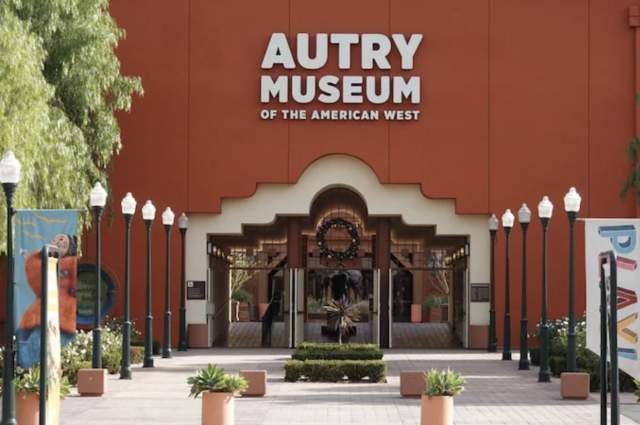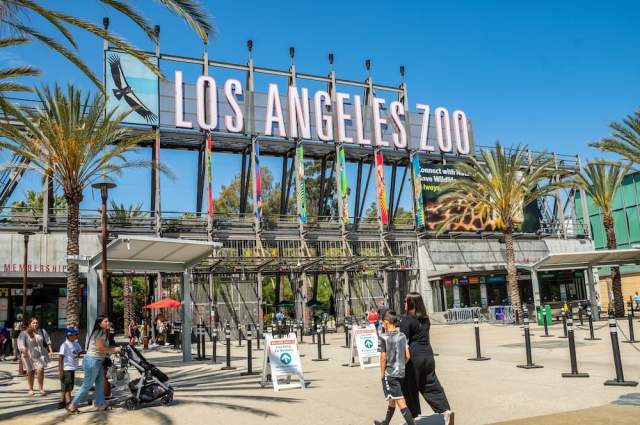With over 4,210 acres of natural chaparral-covered terrain and landscaped parkland and picnic areas, Griffith Park is the largest municipal park with an urban wilderness area in the United States. Situated in the eastern Santa Monica Mountain range, the Park’s elevations range from 384 to 1,625 feet above sea level. With an arid climate, the Park’s plant communities vary from coastal sage scrub, oak, and walnut woodlands to riparian vegetation with trees in the Park’s deep canyons. The California native plants represented in Griffith Park include the California species of oak, walnut, lilac, mountain mahogany, sages, toyon, and sumac. Present, in small quantities, are the threatened species of manzanita and berberis.
Over the years recreational attractions have been developed throughout the Park, however, a substantial portion of the Park remains virtually unchanged from the days Native American villages occupied the area's lower slopes. Today's Griffith Park offers numerous family attractions, an assortment of educational and cultural institutions, miles of hiking and horseback riding trails, and an ideal environment for enjoyable recreation activities.
Originally a part of the Spanish land grant, Rancho Los Feliz, the park was named for its former owner, Colonel Griffith J. Griffith. Born in Glamorganshire, South Wales, Griffith emigrated to the United States in 1865, eventually making a personal fortune in Mexican silver mines and, subsequently, southern California real estate. In 1882, Griffith settled in Los Angeles and purchased a 4,071-acre portion of the Rancho Los Feliz, which stretched northward from the northern boundaries of the Pueblo de Los Angeles. On December 16, 1896, the civic-minded Griffith bequeathed 3,015 acres of his Rancho Los Feliz estate as a Christmas gift to the people of Los Angeles to be used as parkland. The enormous gift, equal to five square miles, was to be given to the city unconditionally - or almost so.
"It must be made a place of recreation and rest for the masses, a resort for the rank and file, for the plain people," Griffith said. "I consider it my obligation to make Los Angeles a happier, cleaner, and finer city. I wish to pay my debt of duty in this way to the community in which I have prospered."
Since Griffith's original gift, further donations of land, City purchases, and the reversion of private land to public domain, the park has expanded to its present size. Col. Griffith died on July 7, 1919, however, he had left a sizeable trust fund to complete the dreams he had for the park; specifically designating funds for the construction of a Greek amphitheater (the Greek Theatre, built 1930) and an observatory and hall of science (Griffith Observatory, opened 1935.)
Griffith Park stands today as a monument to the dedicated vision of one man--Griffith Jenkins Griffith, Park Commissioner, civic philanthropist, and fervent advocate of parklands, and recreation for the health of Los Angeles.
Autry National Center
Griffith Park Bicycle Rental
Griffith Observatory
Griffith Park Southern Railroad
L.A. Equestrian Center
Los Angeles Zoo
Griffith Park Hiking Trails
Hiking into the rugged hills and sparsely developed areas is perhaps one of the most popular forms of recreation in Griffith Park. Hikers are allowed to use the entire 53-mile network of trails, fire roads, and bridle paths. Maps of trails and current information on trail closures and special restrictions are available at the Ranger Station, (323) 913-4688. All trails in the park are closed at dusk. Open fires and smoking are not allowed. One of the most rewarding hikes in the park is the trail leading from the Observatory parking lot to the summit of Mount Hollywood, the highest peak of the park, which affords spectacular views of the entire Los Angeles Basin. Hikers should approach the park with caution; Griffith Park is a wilderness area with wild quail, rodents, foxes, coyotes, rattlesnakes, and deer.








